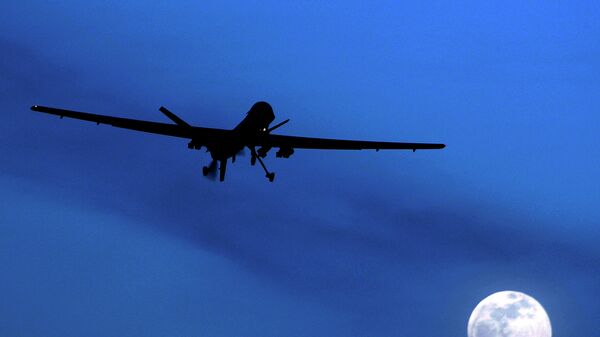A Freedom of Information Act disclosure by the British Ministry of Defense dated May 1 shows that the combat drones fired 19 AGM-114N4 Hellfire missiles in Syria during the first two months of 2017. The FOIA disclosure was sent to Drone Wars, which first reported on the use of the UK's weapons.
The basic idea behind a thermobaric missile is that it releases a cloud of explosive compounds into the air before impact. Upon impact and explosion of the weapon's internal payload, the fuel-air mixture is detonated, too. Accordingly, they are also commonly known as fuel-air explosives, or FAEs.
According to Drone Wars, "The ‘N' version of the missile uses a Metal Augmented Charge warhead that contains a thermobaric explosive fill using aluminum with the explosive mixture."
FAEs commonly draw criticism from human rights groups and American intelligence professionals, two groups ostensibly at loggerheads with one another on many other topics. In 2008, The UK Times reported "the weapons are so controversial that MoD weapons and legal experts spent 18 months debating whether British troops could use them without breaking international law."
Sophia de Tricht, a rocket motor design engineer and former intelligence professional, wrote in a March 2017 column for Forbes that the United States Army doesn't develop thermobaric missiles "because our investigations into thermobaric weapons is that they are cruel and unnecessary."
However, it's worth noting that in 2003 then-Defense Secretary Donald Rumsfeld acknowledged that US Marine AH-1 Cobra helicopters had made use of the AGM-114N Metal Augmented Charge in Iraq.
"DARPA [the Defense Advanced Research Projects Agency] and the DIA (Defense Intelligence Agency, not a typo), did a lot of research into the possibility, but what was discovered is that while the bang was bigger, the weapon itself is… problematic. The employment of a thermobaric weapon against a population is about half a war crime," de Tricht wrote.
Meanwhile, in 2000, Human Rights Watch reported that "the [blast] kill mechanism against living targets is unique and unpleasant… What kills is the pressure wave, and more importantly, the subsequent rarefaction [vacuum], which ruptures the lungs," citing a DIA study. Thus, the weapons are also sometimes called "vacuum bombs."
"If the fuel deflagrates but not does detonate, victims will be severely burned and will probably also inhale the burning fuel. Since the most common [fuel-air explosive] fuels, ethylene oxide and propylene oxide, are highly toxic, undetonated FAE should prove as lethal to personnel caught within the cloud as most chemical agents," HRW continued, still citing DIA.






